
Why Choose an All-in-One Data Acquisition Recorder?
Get to know data acquisition basics, compare available solutions like PCI cards, oscilloscopes and data recorders, and select the right data acquisition system for your application.
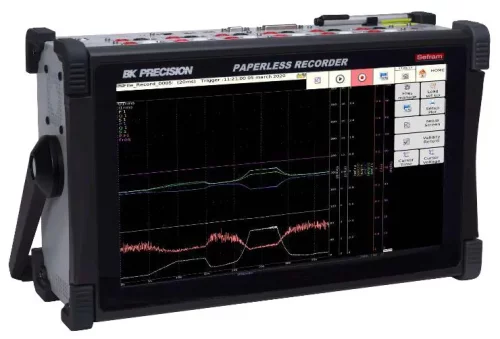
Data acquisition systems are used to acquire, visualize, and store physical measurements. There are many types of data acquisition systems available on the market today. These include internal PCI cards, external hardware that connects to a PC via a USB or Ethernet cable, and all-in-one systems. The latter are often referred to as data acquisition recorders, or data recorders for short. They provide a complete and portable solution including data acquisition hardware, an embedded PC, and a display for configuring the instrument and viewing data. Digital storage oscilloscopes (DSOs) are another kind of data acquisition system with very specific use cases. This article will help you understand data acquisition basics, compare available solutions, and select the right system for your application.
Data Acquisition Basics
Data acquisition refers to the process of measuring physical phenomenon such as temperature, force (including pressure and strain), flow rate, and more. The first step is to convert the physical phenomenon into an electrical signal such as voltage or current. This is the function on a sensor or transducer. Additional conditioning, such as amplifying, attenuating, linearizing, isolating and filtering may be required. This signal conditioning can be performed through external circuitry, but many data acquisition systems provide built-in signal conditioning.
In order to convert the electrical signal into a digital value, data acquisition systems utilize analog to digital converters (ADCs). The sample rate and number of bits of the ADC determine the maximum frequency of the signal that can be acquired and the resolution at which the signal can be captured. In order to digitally recreate an analog signal, Nyquist’s theorem states that the sampling speed must be at least two times faster than the highest frequency being sampled. However, this only ensures that the frequency of the signal can be accurately reproduced. Accurate reconstruction of the shape generally requires sample rates of at least five to ten times faster than the frequency of the signal being recorded.
Measurement resolution refers to the number of parts a signal can be partitioned into. In general, more bits allow you to detect smaller changes in the signal. Modern ADCs typically provide 12 or 16-bit resolution. An ADC with 12 bits of resolution means that the smallest detectable change in a signal can be determined by dividing the input range by 212 or 4,096 steps. For an input range of 0-10 volts, the smallest detectable change in the input signal using a 12-bit ADC is 2.4 millivolts.
Once the signal is converted into a digital form, the instrument is able to display and store the information in its memory. Acquired data can also be further processed by a microcontroller or FPGA. Examples include mathematical operations or digital filtering.
Oscilloscope or Data Acquisition System?
Digital Storage Oscilloscopes (DSOs) and data acquisition systems are similar in many ways. In terms of functionality, both are versatile instruments that capture and display time-varying signals. Additionally, both include signal analysis tools and data logging capabilities. However, these instruments vary in many ways including sampling rates, signal conditioning options, and storage space. As such, they are used for very different applications.
The fast-sampling rates of an oscilloscope (typically hundreds of Megahertz to Gigahertz) make it ideal for analyzing high speed or transient signals. With deeper memory and a wide variety of signal conditioning options, data acquisition systems are better suited for acquiring a variety of static and dynamic signals for extended periods of time. Data acquisition systems tend to have higher resolution ADCs, but slower sample rates than that of an oscilloscope.
Data acquisition systems also provide higher channel counts, multiple input types, and additional functionality such as alarm outputs. Whereas a typical DSO has 2 or 4 inputs, data acquisition systems can scale from 4 to hundreds of channels. Additionally, dedicated input modules with built-in signal conditioning allow for direct connection of common sensors such as thermocouples, RTDs, strain gages, and more. Data acquisition systems also make it easy to configure input channels for specific sensors, including scaling. For full system integration, data acquisition systems may provide digital inputs to monitor the status of external devices and outputs that can be triggered based on user defined conditions.
Why Choose A Data Acquisition Recorder?
All-in-one data acquisition recorders provide many benefits over other types of data acquisition systems. With large internal memory, a display for visualizing waveforms and post-acquisition analysis tools, these instruments eliminate the need for an external PC while still providing various communication ports for remote access and networking. Additionally, their compact form factor, rugged design, and internal battery pack make data acquisition recorders ideal for a wide variety of applications including maintenance and testing in the field.
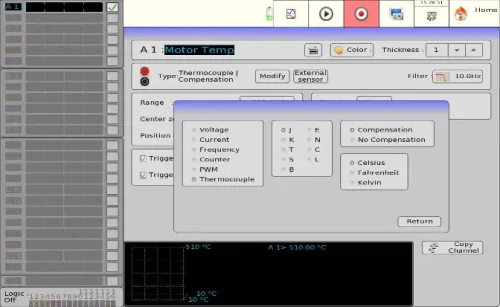
Data recorders come complete with system software for configuring measurement channels, viewing data in real-time, and post-acquisition analysis. No programming is required. Configuring channels is easy with predefined measurement types and scaling for standard or custom sensors. For viewing data, the software may allow you to choose from predefined displays for visualizing data (e.g. time series, XY plots, or numeric values) or create your own. Some data recorders also provide application specific functionality such as power analysis that may reduce or eliminate the need for additional instruments.
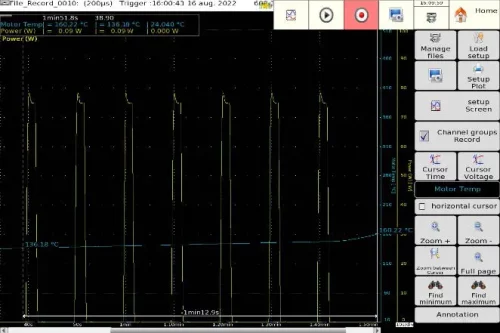
For post-acquisition viewing and analysis, data recorders allow you to select a file, replay data, and apply a variety of built-in analysis tools. Additional software tools for offline analysis, exporting data into common formats, and controlling units remotely may also be available.
Selecting A Data Recorder
When selecting a data recorder, it is important to ensure the instrument meets all current and future measurement needs. These may include channel count, maximum sampling rate, supported measurement types, sampling mode, and storage capacity. Other requirements, such as the need to synchronize data with other systems or acquire CAN bus inputs can also be important considerations. However, it is often the less tangible factors, such as ease-of-use, software features, manufacturer support and services, and expandability that increase business value and long-term satisfaction.
The sampling rate should be selected based on the type of signals being captured. Environmental conditions like temperature and humidity are static, slow changing signals that can be accurately captured at low sampling rates (typically 10 to hundreds of samples per second). In contrast, dynamic signals such as vibration and mechanical shock change rapidly and require much higher rates (typically thousands or even millions of samples per second). As noted above, accurately reproducing a dynamic signal requires sampling at least 2x the expected frequency.
In addition to the maximum sampling rate, it is also important to how the samples are acquired. Data recorders acquire measurements in one of two ways, multiplexed or simultaneous. In multiplexed sampling, the instrument scans enabled input channels and acquires a single data point from each. All channels share a common ADC. Since there is a fixed delay between each channel due to switching and settling times, the fastest sampling rate is limited by the number of channels. Data recorders with multiplexed sampling are best suited for collecting static measurements across many channels for extended periods of time.
In simultaneous sampling, each channel has its own ADC and samples are acquired simultaneously at a user defined rate. Additionally, the ADCs are synchronized to a common time base, which allows values to be aligned to a specific timestamp. This is important when trying to compare dynamic signals. Capturing both static (slow changing) and dynamic (fast changing) signals is possible, but acquiring static signals at high sampling rates is an inefficient use of memory.
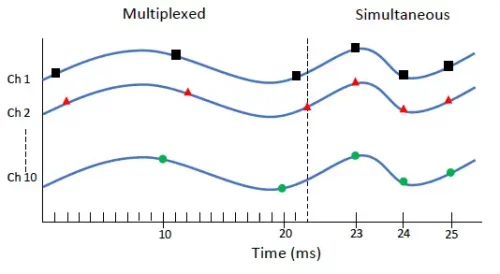
For applications where it is desirable to measure both static and dynamic signals, it is a good idea to select a data recorder that supports multiple sampling rates. This allows for capturing static signals at low rates and dynamic signals at high rates while maximizing the available storage space. Manufacturers often provide a range of products with varying channel counts, sampling modes, and maximum sampling rates.
Many data recorders provide slots for dedicated measurement modules. This modular architecture allows you to configure the system with the right mix of input modules, maximizing performance and eliminating the need for external conditioning. A configurable system also allows for the system to be upgraded as testing needs change.
For synchronizing acquired data within a single system or across multiple systems, many data recorders offer inputs for timing sources. The most common types are IRIG and GPS. Both utilize dedicated inputs on the instrument.
IRIG was developed in the 1950’s by the U.S. military’s Inter-range Instrumentation Group (IRIG) as a protocol for transferring precise timing information. The standard has evolved over the years and includes multiple timecode definitions, each with an alphabetic designation. The current timecodes are A, B, D, E, G, and H. The time code specifies bit rate, bit time, bits per frame, frame time, and frame rate. When selecting a data acquisition system, it is important to confirm that the required timecode is supported by the instrument.
GPS synchronization is based on a highly accurate pulse per second (PPS) signal from GPS satellites. A GPS receiver is required to receive the signal and generate the PPS output. The benefit of GPS synchronization is that it enables systems to acquire synchronized measurements over a large area. It also provides an absolute timestamp.
Available storage space is a key consideration when choosing between available models. Applications requiring only a small number of channels or low acquisition rates do not require a lot of storage space, but acquiring a large number of channels at high sampling rates can fill up a hard drive quickly. When used as a standalone device, the instrument should have sufficient memory to capture all measurements for the desired length of time.
B&K Precision’s Data Recorder Product Line
B&K Precision offers a full selection of all-in-one data recorders, from portable multi-channel systems to high-speed configurable systems. All B&K Precision data recorders come with built-in easy-to-use application software, and upgrades are free for life. The selection guide below will help you choose the right product for your specific application.
The DAS200 series is B&K’s smallest and most portable design. The DAS220 and DAS240 provide a maximum sample rate of 1000 Sa/s and can accommodate 10 or 20 channels respectively. The DAS240 can also be expanded to 200 channels by daisy chaining multiple terminal blocks. With universal inputs and up to 15 hours of battery life, the DAS200 series is ideal for a wide variety of applications including temperature logging and process monitoring.
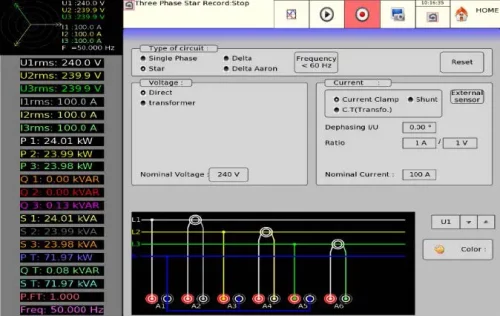
The DAS30/50/60 Series is a high-speed multi-function data recorder that provides sampling rates as fast as 1 MSa/s and up to 6 channels. Its simultaneous acquisition method makes this data recorder ideal for applications such as maintenance and failure analysis, electrical power analysis and motor testing. For printing hardcopies of data, a factory installed 110mm thermal printer is available.
The DAS1700 is a high-speed configurable system that offers top of the line features and performance. The DAS1700 offers fast sampling rates (up to 1MS/sec), high channel count (up to 72), high resolution (14 or 16-bit), and ample storage space for recording data over long periods of time. Its modular form factor with 4 available measurement boards makes this instrument highly versatile and ideal in just about any application. The DAS1700 application software also includes a dedicated power analysis mode for testing single or 3-phase electrical network.
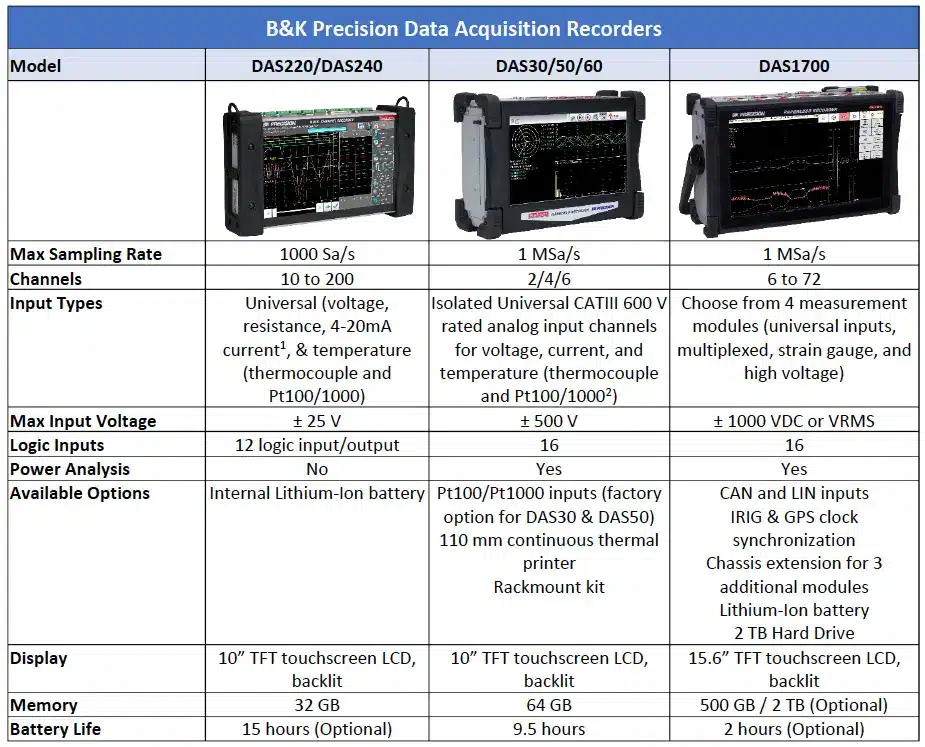
About B&K Precision
For more than 70 years, B&K Precision has provided reliable and value-priced test and measurement instruments worldwide.
Headquarters in Yorba Linda, California houses administrative and executive functions as well as sales and marketing, design, service, and repair. European customers are most familiar with B&K through French subsidiary, Sefram. Engineers in Asia know B&K through our B+K Precision Taiwan operation. The independent service center in Singapore services customers in Singapore, Malaysia, Vietnam, and Indonesia.
Visit B&K Precision Website








